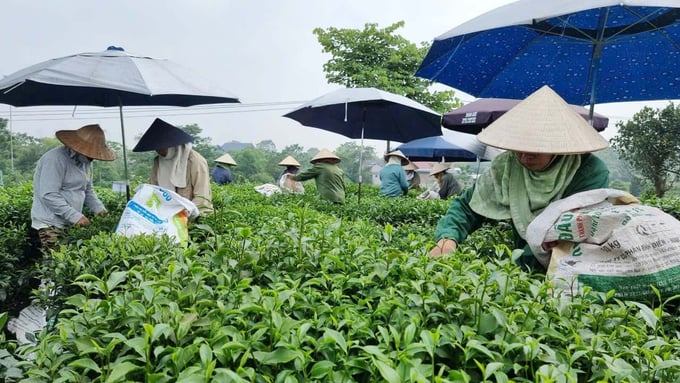October 26, 2025 | 11:43 GMT +7
October 26, 2025 | 11:43 GMT +7
Hotline: 0913.378.918
October 26, 2025 | 11:43 GMT +7
Hotline: 0913.378.918

According to the Agency of Foreign Trade (Ministry of Industry and Trade) and data from the General Department of Customs, Vietnam exported nearly 12.7 thousand tons of tea in November 2024, generating a total revenue of nearly 23 million USD. Consequently, this marks an increase of 2.6% in volume and 2.2% in value compared to the corresponding period in 2023.
The average export price of tea in November 2024 was 1,793 USD per ton, which is a decreaes of 0.4% from November 2023.
Over the first 11 months of 2024, Vietnam's tea exports reached nearly 133 thousand tons and generated approximately 235 million USD in revenue. This is an increase of 25.4% in volume and 26.9% in value compared to the corresponding period in 2023.
The average export price of tea over the 11-month period was 1,765 USD per ton, which is an increase of 1.3% compared to the corresponding period in 2023.
During this time frame, tea exports to major markets saw considerable growth. Notably, exports to Pakistan increased by 24.7% in volume and 34.2% in value; exports to Taiwan increased by 3% in volume and 6.2% in value; exports to China increased by 177.4% in volume and 85.2% in value; exports to Indonesia increased by 47.9% in volume and 53.9% in value.
Conversely, tea exports to Iraq experienced a sharp decline, falling by 44.8% in volume and 41.8% in value.
According to a report from the Department of Crop Production (Ministry of Agriculture and Rural Development), Vietnam exported approximately 121 thousand tons of tea in 2023, generating a total revenue of nearly 211 million USD. Accordingly, this represented a decrease of 16.9% in volume and 10.9% in value compared to the corresponding period in 2022.
Projections indicate that by 2030, Vietnam’s tea export volume will reach approximately 136.5 thousand tons, with an average annual growth rate of 0.82%. Furthermore, exports will account for nearly 80% of Vietnam's total tea yield. Vietnam's main tea export markets will continue to consist of Pakistan, China, Russia, and Indonesia, with a shift toward high-quality tea products targeting the EU market.
Translated by Nguyen Hai Long

(VAN) The Integrated Plant Health Management (IPHM) helps farmers in Quang Ngai increase rice production efficiently and sustainably.

(VAN) Developing low-emission cultivation technology packages, MRV system, strengthening multi-stakeholder cooperation are to realize the goal of low-emission crop production.
/2025/10/23/5928-2-194850_964.jpg)
(VAN) The 'Regenerative cocoa production to support livelihood development in Vietnam' (ReCoPro) project marks an important step toward sustainable cocoa production.

(VAN) Reducing antibiotic dependence in livestock production helps protect public health, enhance food safety, and promote sustainable agricultural development.

(VAN) Experts describe Viet Nam as a 'policy laboratory' within ASEAN, where new agroecological, green finance, and risk-management initiatives are being piloted before wider regional adoption.

(VAN) Limiting rice straw burning and reusing agricultural by-products as materials or fertilizers not only improves soil health but also helps clean the air.

(VAN) ASSET delivers long-term vision and strategy, innovative models, learning networks, policy impact, and measurable environmental benefits.